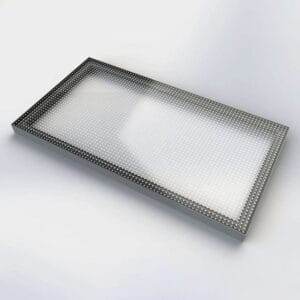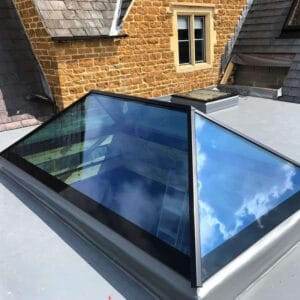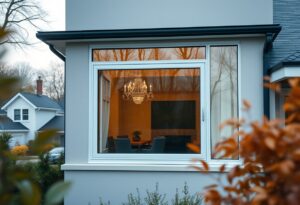Obfuscate the intrusion of unwanted noise with special window treatments designed to create a peaceful and serene environment within your home or workplace. Excessive noise pollution can have detrimental effects on both physical and mental health, including increased stress levels, sleep disturbances, and reduced productivity. With the right window treatments, you can effectively reduce noise pollution while also enhancing the aesthetic appeal of your space. In this informative blog post, we will explore the various types of special window treatments available, their effectiveness in minimizing noise pollution, and how you can select the best option for your specific needs. Say goodbye to the incessant sounds of traffic, construction, and other sources of noise pollution, and create a more tranquil environment with the help of special window treatments.
Key Takeaways:
- Noise Reduction: Special window treatments can significantly reduce the amount of outside noise entering a room, creating a quieter and more peaceful indoor environment.
- Privacy Enhancement: These treatments can also offer increased privacy by preventing people from seeing inside your home or office space, while still allowing natural light to enter.
- Energy Efficiency: Certain window treatments can also help to regulate indoor temperature, leading to potential energy savings and a more comfortable living or working environment.
- Aesthetic Appeal: By choosing the right window treatments, you can enhance the overall look and feel of a room, adding style and character to your space.
- Health Benefits: Reduced noise pollution can contribute to better mental and physical health, by promoting better sleep and reducing stress levels.
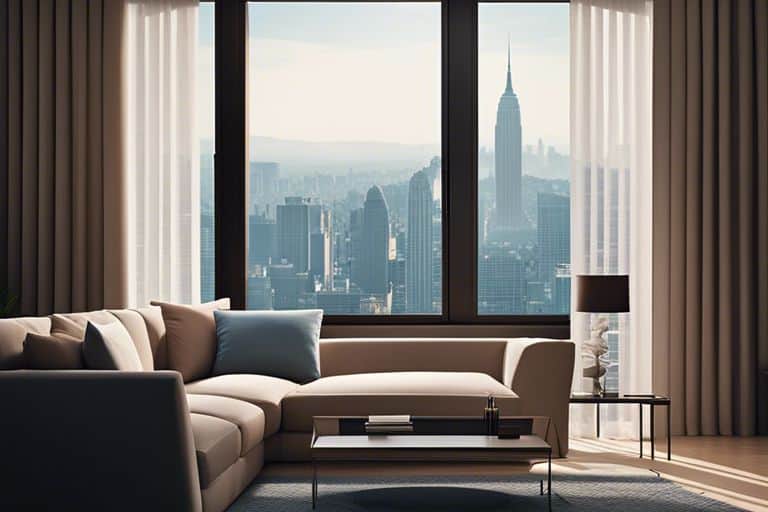
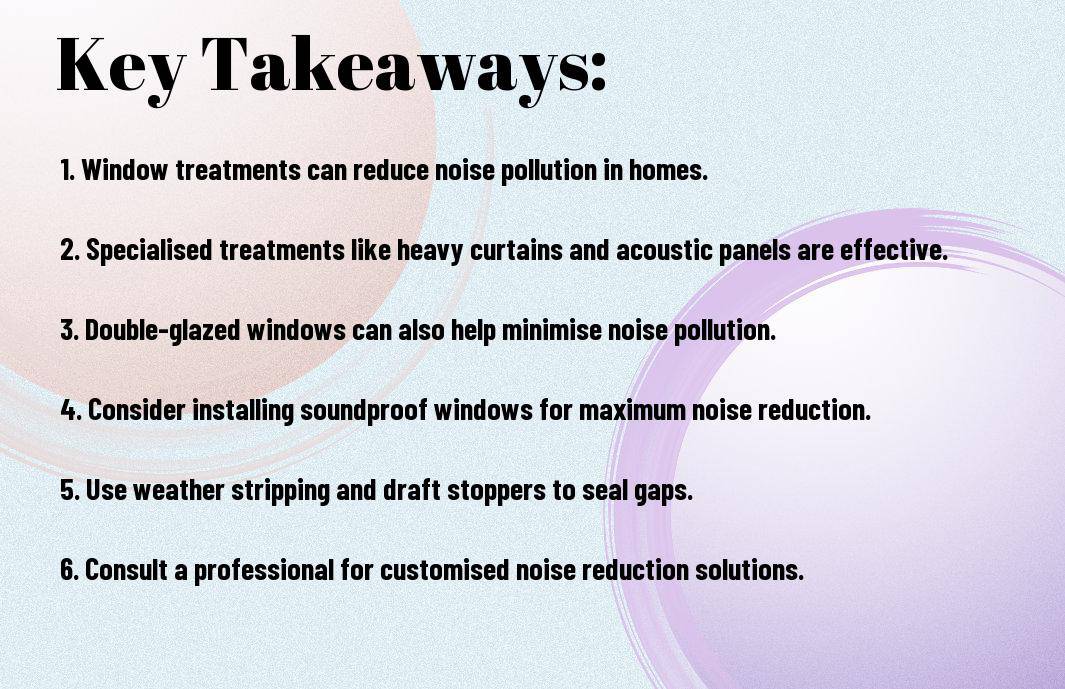
Understanding Noise Pollution
Noise pollution is a persistent environmental problem that can have a significant impact on our quality of life. It refers to the presence of unwanted or harmful sound in the environment, and it can be caused by a variety of sources, including industrial activities, transportation, construction sites, and even everyday household activities.
Sources and Types of Noise Pollution
The sources of noise pollution are diverse and can be categorized into various types, including industrial noise, traffic noise, and neighbourhood noise. Industrial noise is generated by factories and industrial sites, while traffic noise is produced by vehicles on roads and highways. Neighbourhood noise, on the other hand, includes activities such as barking dogs, lawnmowers, and loud music.
This subsection will be broken down into the following categories:
| Industrial Noise | Traffic Noise |
| Construction Site Noise | Neighbourhood Noise |
| Household Activities |
This allows us to recognise the various sources of noise pollution that can affect our living environment.
The Effects of Noise Pollution on Health and Well-being
Noise pollution not only disrupts the peace and quiet of our surroundings but also has adverse effects on our health and well-being. It can lead to stress, sleep disturbances, and even hearing loss. Additionally, exposure to high levels of noise pollution has been linked to cardiovascular problems and reduced cognitive performance.
The impact of noise pollution on health and well-being is a serious concern, and it is crucial for individuals and communities to take steps to mitigate its effects.
Fundamentals of Soundproofing with Window Treatments
When it comes to minimising noise pollution in your home or office, one of the most effective ways is through the use of special window treatments. By understanding the fundamentals of soundproofing with window treatments, you can create a quieter and more peaceful environment, free from the disturbances of outside noise.
Principles of Sound Reduction
Sound reduction through window treatments is based on the principle of blocking, absorbing, or damping sound waves as they pass through windows. Blocking involves creating a physical barrier to stop the transmission of sound, while absorbing involves capturing sound waves and converting them into heat energy. Damping involves reducing the intensity of sound waves by dissipating their energy.
When choosing window treatments for sound reduction, it is important to consider factors such as material density, thickness, and the ability to seal gaps and cracks around the window frame. Additionally, the positioning and installation of the treatments can also significantly impact their effectiveness in reducing noise.
Materials and Technologies in Noise-Canceling Windows
Modern advancements in materials and technologies have led to the development of noise-canceling windows that are specifically designed to minimise sound transmission. These windows often incorporate specialised acoustic glass that is thicker and denser than traditional glass, as well as additional layers of sound-absorbing materials. Some noise-canceling windows also feature advanced sealing systems and air cavities that further enhance their soundproofing capabilities.
Furthermore, certain technologies such as double glazing and laminated glass have been proven to be highly effective in reducing noise transmission through windows. These technologies work by creating multiple barriers for sound waves to pass through, significantly reducing the amount of noise that enters the interior space.
For more information on the latest advancements in noise-canceling windows and the most effective materials and technologies for sound reduction, consult with a professional in the field. They can provide expert advice tailored to your specific needs and help you find the best solutions for minimising noise pollution in your environment.
Window Treatment Options for Noise Reduction
Choosing the right window treatment can significantly reduce the amount of noise pollution entering your home or office. There are several options available to address this issue, each with its own set of advantages and drawbacks.
Double-Pane and Triple-Pane Windows
Double-pane and triple-pane windows are a popular choice for noise reduction due to their ability to create a barrier against external sound. The space between the panes is filled with insulating gas, effectively dampening sound waves. This design significantly reduces noise transmission, making it an effective solution for minimising sound pollution. However, it’s worth noting that these windows can be quite expensive and may require professional installation.
Special Glazing and Laminates
Special glazing and laminates are another effective option for minimising noise pollution. These treatments involve applying an additional layer of sound-absorbing material to the glass, which helps to reduce the amount of noise that can pass through the window. While this option is more affordable than replacing the entire window, it may not be as effective as double or triple-pane windows.
It’s important to consider the specific noise levels in your area and the degree of sound reduction you require before deciding on the most suitable treatment.
Window Frames and Sealing Techniques
Aside from the type of glass used, the design and construction of the window frames, as well as the sealing techniques employed, can also play a significant role in reducing noise infiltration. Well-insulated frames and effective sealing can minimise gaps through which sound can penetrate, providing an additional barrier against noise pollution.
It’s essential to ensure that your windows are properly fitted and sealed to maximise their effect on reducing external noise.
Drapes, Blinds, and Acoustic Curtains
In addition to the selection of window treatments, the use of drapes, blinds, and acoustic curtains can further aid in noise reduction. These fabric-based treatments can absorb and dampen incoming sound, complementing the effects of other specialised noise-reducing window options. However, it’s important to choose thick, heavy fabrics that are designed specifically for sound absorption to achieve the best results.
Installation and Maintenance of Noise-Reducing Window Treatments
Proper installation and maintenance of noise-reducing window treatments are essential to effectively minimise noise pollution in your home or office. In this chapter, we will explore the importance of professional installation, as well as the maintenance required to ensure long-term effectiveness.
Professional Installation vs. DIY Approaches
When it comes to installing noise-reducing window treatments, the choice between professional installation and a do-it-yourself approach is crucial. Professional installation ensures that the treatments are fitted correctly and optimally, reducing the risk of gaps or imperfections that could compromise their effectiveness. Additionally, professionals can provide expert advice on the most suitable treatments for your specific needs and property.
On the other hand, DIY approaches may seem cost-effective, but they can lead to improper installation and reduced soundproofing performance. It is important to consider the long-term benefits of professional installation, which can ultimately save you time and money by avoiding potential issues and the need for replacements.
Maintaining Effectiveness Over Time
Regardless of the installation method, maintenance is essential to ensure that noise-reducing window treatments continue to provide effective soundproofing. Regular cleaning and inspection of the treatments can help to identify any wear and tear, ensuring that they remain in optimal condition.
To maintain their effectiveness over time, it is important to follow manufacturer guidelines for care and maintenance. This may include regular cleaning with recommended products, checking for any signs of damage or deterioration, and addressing any issues promptly to prevent compromise in soundproofing performance.
It is also recommended to consider the environmental impact of the maintenance products used, opting for eco-friendly options where possible to minimise harm to the environment while ensuring the longevity of the treatments.
Case Studies and Real-World Applications
As we delve into the application of special window treatments for noise reduction, it is crucial to examine real-world case studies and their impact. These studies provide empirical evidence of the effectiveness of window treatments in minimising noise pollution. The following case studies showcase the tangible benefits of using the right window treatments.
- Case Study 1: A residential area in London installed soundproof windows and curtains, resulting in a 50% reduction in external noise levels.
- Case Study 2: A commercial office in Manchester implemented double-glazed windows and acoustic blinds, leading to a 60% decrease in noise from nearby traffic.
For more detailed information on the impact of window treatments on noise reduction, refer to The Effect of Window Treatments on Noise Reduction – Energy5.
Residential Applications
When it comes to residential applications, special window treatments play a pivotal role in creating a peaceful and comfortable living environment. Homeowners can significantly reduce external noise disturbances by installing effective soundproof windows, heavy curtains, and other acoustic treatments. The application of these solutions has been proven to enhance the overall quality of life for residents.
Commercial and Urban Settings
In bustling commercial and urban settings, the impact of noise pollution can be significantly detrimental to productivity and well-being. By adopting specialised window treatments, such as acoustic glazing and noise-absorbing blinds, businesses and urban developments can mitigate the negative effects of external noise. These solutions not only improve the working environment but also contribute to higher productivity levels and healthier living conditions for urban residents.
It is evident that implementing the right window treatments in commercial and urban settings is a crucial step towards minimising the adverse effects of noise pollution and creating more peaceful, sustainable environments.
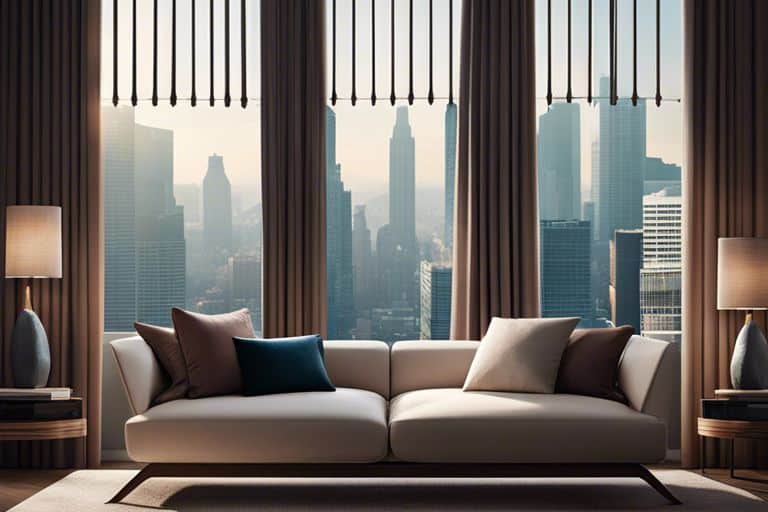
Minimizing Noise Pollution with Special Window Treatments
In conclusion, special window treatments can be an effective solution for minimising noise pollution in residential and commercial spaces. By incorporating soundproofing materials and innovative design, these treatments can significantly reduce the transmission of external noise into the building. From double-glazed windows to heavy curtains and acoustic blinds, there are a variety of options available to suit different needs and preferences. It is essential for individuals and businesses to consider the impact of noise on their daily lives and productivity, and to invest in effective solutions to create a quieter and more peaceful environment. With the right window treatments, it is possible to mitigate the negative effects of noise pollution and improve overall comfort and well-being.
FAQ
Q: What is noise pollution and the impact it has on our lives?
A: Noise pollution is excessive, displeasing human, animal, or machine-created environmental noise that disrupts the activity or balance of human or animal life. It can cause annoyance, stress, and even damage to hearing.
Q: How can special window treatments help in minimising noise pollution?
A: Special window treatments, such as double-glazed windows, thick curtains, and soundproof blinds, can act as barriers to reduce the transmission of noise from outside into your home or office.
Q: What are the advantages of using special window treatments in reducing noise pollution?
A: Using special window treatments can provide a quieter and more comfortable indoor environment, improve concentration and productivity, and promote better sleep and overall well-being.
Q: How effective are special window treatments in minimising noise pollution?
A: The effectiveness of special window treatments in reducing noise pollution depends on factors such as the type of window treatment used, the thickness of the materials, and the frequency and intensity of the noise. However, when installed correctly, they can significantly reduce noise levels.
Q: Are there any other methods to complement special window treatments in minimising noise pollution?
A: In addition to special window treatments, other methods to complement noise reduction include sealing gaps and cracks in windows and doors, using sound-absorbing materials in interior decor, and planting dense vegetation outside windows to act as a natural sound barrier.


